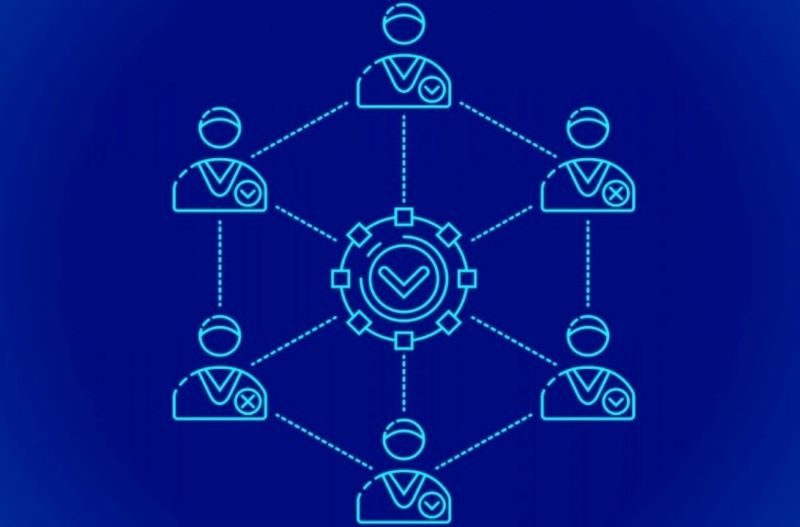
What is a Consensus Mechanism? The key to unlocking the Blockchain world
In the ever-evolving world of technology, Blockchain has emerged as a revolution, promising to transform the way we transact, store information, and interact with one another. But behind the seamless and secure operation of Blockchain lies a crucial element: the consensus mechanism. So, what is a consensus mechanism? Why is it so important? Let’s explore in this article.
What is a Consensus Mechanism?
A consensus mechanism, also known as a consensus protocol or consensus algorithm, is a process through which nodes in a Blockchain network reach an agreement on the current state of the Blockchain, including transaction history and other information. In other words, a consensus mechanism ensures that all nodes have the same copy of the Blockchain, preventing fraud and ensuring data integrity.
Common types of consensus mechanisms
The Blockchain world is constantly evolving, leading to the emergence of various consensus mechanisms, each with its own unique characteristics and applications. Let’s explore some of the most common consensus mechanisms today:
Proof of Work (PoW)
How it works: In PoW, nodes (often called “miners”) compete to solve a complex mathematical problem. The first node to solve the problem has the right to add a new block to the Blockchain and receive a reward. This process requires significant computing power, creating a fierce competition among miners.
Advantages
- High security: PoW is considered the most secure consensus mechanism today, thanks to its resistance to 51% attacks.
- Time-tested: Bitcoin, the first and largest cryptocurrency in the world, uses PoW and has been operating stably for over a decade.
Disadvantages
- Energy-intensive: The mining process requires a tremendous amount of electricity, raising concerns about its environmental impact.
- Slow transaction speed: Solving complex mathematical problems takes time, leading to slower transaction processing speeds compared to other mechanisms.
- Examples: Bitcoin, Litecoin, Monero (before switching to RandomX).
Proof of Stake (PoS)
How it works: In PoS, nodes (“validators”) are selected to create new blocks based on the amount of cryptocurrency they “stake.” In other words, the more coins they hold, the higher their chances of being selected to validate transactions and receive rewards.
Advantages
- Energy-efficient: No need to consume energy for solving mathematical problems like PoW, making PoS more environmentally friendly.
- Faster transaction speed: The transaction validation process is fast, significantly improving transaction processing speed.
- Encourages long-term holding: Validators are motivated to hold coins for the long term to increase their chances of being selected and receiving rewards.

Disadvantages
- Risk of centralization: Those who hold a large number of coins may have a greater influence on the network.
- Security concerns: PoS is still in development and may have undiscovered security vulnerabilities.
- Examples: Ethereum (after The Merge), Cardano, Solana, Tezos.
Delegated Proof of Stake (DPoS)
How it works: In DPoS, nodes elect a number of delegates to create new blocks and manage the network. These delegates are responsible for validating transactions and maintaining the operation of the Blockchain.
Advantages
- Extremely fast transaction speed: DPoS allows thousands of transactions to be processed per second, surpassing both PoW and PoS.
- High efficiency: The decision-making process is fast and efficient due to the limited number of delegates.
- Encourages participation: Users can participate in the network governance process by voting for delegates.
Disadvantages
- Less decentralized: Power is concentrated in the hands of the elected delegates.
- Risk of manipulation: Delegates may collude to control the network.
- Examples: EOS, Tron, Steem, Bitshares.
Proof of Authority (PoA)
How it works: In PoA, pre-selected nodes (“authorities”) have the right to create new blocks. These authorities are typically reputable organizations or individuals trusted by the community.
Advantages
- Extremely fast transaction speed: Similar to DPoS, PoA allows transactions to be processed at very high speeds.
- Suitable for enterprise applications: PoA provides a highly controlled and secure environment, suitable for applications in businesses and organizations.
Disadvantages
- Highly centralized: Power is concentrated in the hands of the selected authorities.
- Not suitable for public applications: The centralized nature of PoA makes it unsuitable for applications requiring high decentralization.
- Examples: VeChain, Hyperledger Besu.
Other consensus mechanisms
In addition to the common mechanisms mentioned above, there are many other consensus mechanisms being developed and tested, each offering unique solutions to different challenges:

- Proof of History (PoH): This mechanism uses a sequential hash function to create an unchangeable record of time, allowing the verification of the order of events without relying on timestamps.
- Proof of Burn (PoB): In PoB, users “burn” (send to an inaccessible address) a certain amount of cryptocurrency to have the right to participate in the block creation process.
- Proof of Capacity (PoC): This mechanism uses free storage space on hard drives to validate transactions, instead of computing power like PoW.
etc.
Each consensus mechanism has its own advantages and disadvantages, and the choice depends on the specific purpose and requirements of each Blockchain project.
Benefits of consensus mechanisms
Consensus mechanisms are not just technical algorithms, but also the foundation for the core values of Blockchain. Let’s consider the key benefits they bring:
Robust Security
- Protection against attacks: Consensus mechanisms require the agreement of the majority of nodes in the network to confirm any transaction or change on the Blockchain. This creates a significant barrier to attacks, as attackers need to control most of the network to carry out fraudulent activities.
- Prevention of forgery: Each block on the Blockchain contains the hash of the previous block, forming a tightly linked chain. Any change in a block will alter its hash, and therefore, will be immediately detected by other nodes in the network. This ensures that the data on the Blockchain is tamper-proof.
Absolute Transparency
- Public and verifiable: All transactions on the Blockchain are publicly recorded and can be verified by anyone. This creates a transparent environment where all activities are tracked, and there is no room for concealment or fraud.
- Enhanced accountability: The transparency of Blockchain enhances the accountability of participants. All actions are recorded and traceable, encouraging honesty and compliance with the rules.
Strong Decentralization
- Distribution of power: No single individual or organization can control the Blockchain. Power is distributed among the nodes in the network through the consensus mechanism, ensuring that no one can manipulate or censor the system.
- Censorship resistance: The decentralized nature of Blockchain makes it censorship-resistant, meaning no one can stop or reverse transactions once they have been confirmed by the network. This is especially important in areas such as freedom of speech and anti-censorship of information.
Efficiency and Scalability
- Resource optimization: Some consensus mechanisms, such as Proof of Stake (PoS), are designed to be more energy and resource-efficient than traditional mechanisms like Proof of Work (PoW). This helps reduce environmental impact and operating costs.
- Increased transaction speed: New consensus mechanisms are being developed to increase transaction processing speed and the scalability of Blockchain, meeting the growing demands of users and applications.
In conclusion, consensus mechanisms are at the heart of Blockchain, ensuring its stable, secure, transparent, and reliable operation. It is not just an algorithm but also a philosophy, a commitment to fairness and democracy in the digital world. As we enter the new era of Blockchain technology, understanding consensus mechanisms will help us grasp the opportunities and challenges it brings, while contributing to building a decentralized and sustainable future.
If you’re interested in learning more about consensus mechanisms and various Blockchain projects, continue exploring this colorful world with Solution Of Blockchain. Wish you success on your Blockchain discovery journey!




